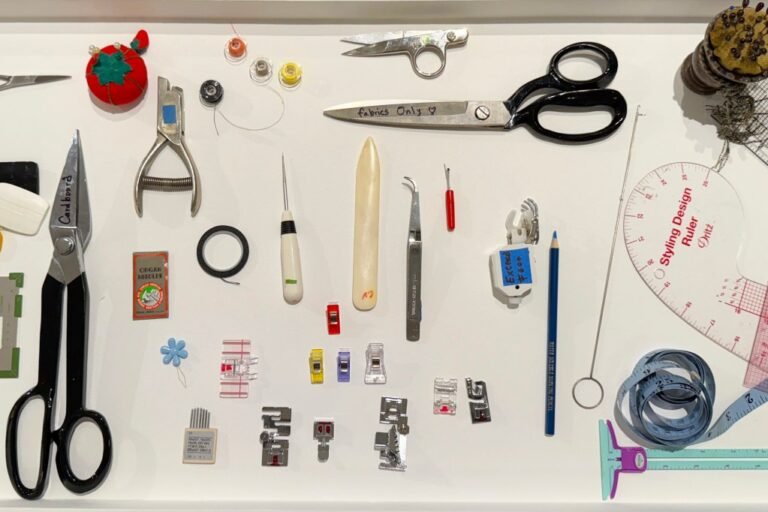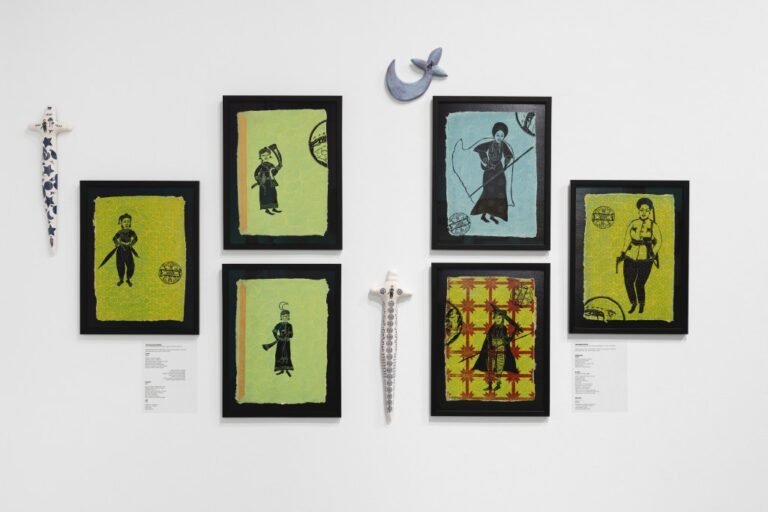

‣ The DePaul Art Museum is showing a timely exhibition honoring the Young Lords, a pathbreaking Puerto Rican political organization, and refuses to self-censor in the face of attacks on cultural institutions. Courtney Kueppers writes for WEBZ Chicago:
Originally a street gang, the Young Lords grew into an advocacy group focused on the rights of Puerto Ricans who had settled in Lincoln Park in the 1950s and ’60s. These communities were facing displacement under Mayor Richard J. Daley’s plan for “urban renewal.” Despite their protracted activism, inspired in part by the Black Panther Party, the Young Lords’ legacy has been underrecognized in the city where the organization began. Later, other Young Lords chapters formed in places like New York.
“Somewhere along the way, we sort of forgot or really marginalized the history of the Young Lords here in Chicago — and certainly in the neighborhood of Lincoln Park, that has changed so much,” said Lazú, a professor in the university’s modern language department who has spent years studying the Young Lords. “But we still remember them as one of the most influential Civil Rights organizations for Latinos of that era.”
‣ Amid crackdowns on campus protests, University of Texas students are also turning to the 1960s for guidance. Sasha von Oldershausen reports for Texas Monthly on a newly revived, student-run underground newspaper that hasn’t been printed in nearly 50 years:
“It was filling a void,” says Dreyer, now eighty, of the newspaper’s mission. He eventually dropped out of UT and dedicated himself full-time to The Rag. In the decade that followed, the underground newspaper chronicled the growing anti-war and civil rights movements, Chicano labor uprisings, and the era’s broader cultural milieu: arts and literature, rock ’n’ roll, the sexual revolution. Several staffers ran an abortion-referral service next to the Rag offices and helped attorney Sarah Weddington lay the groundwork for Roe v. Wade. At Dreyer’s Austin home, a photograph from those early years shows a “Legalize Abortion” poster hanging on the office wall, a sight that wouldn’t look out of place in Small and Hosseini’s living room headquarters.
In many ways, Small and Hosseini’s ethos echoes that of The Rag’s founders, particularly their disquiet over free speech. Hosseini served as editor of The Daily Texan’s opinion section for one semester, but she ultimately felt that she couldn’t truly speak her mind while affiliated with the university. After connecting with Embree and learning about The Rag’s history, Hosseini, Small, and Lindberg conceived of a publication that was institutionally and financially independent. In September, they consorted with the magazine’s “old guard,” including Dreyer—a meeting of minds detailed in a centerfold letter from the editors—and raised some $600 in contributions. “Those of us who founded and produced The Rag in its earlier incarnation are honored that a new generation has been inspired to bring the publication back to life,” Dreyer says.
‣ The eerie AI Friend ads have already been memed and defaced to the nth degree, but for the Nation, Zito Madu explains what the rise of AI companions says about the world we should be building:
Friend might be the most visible, but it’s not the only attempt at an AI companion app out there. Dot, which was founded by Sam Whitmore and former Apple designer Jason Yuan, and which has since gone offline, was a similar attempt at building an AI app that acts as a replacement for human intimacy. There’s also Character.AI, Soul Machine, and Replika (yes, these names are all real). And AI platforms like Grok and ChatGPT, which weren’t originally positioned as companion apps, have been reprogrammed towards that goal.
The market for digital relationships is booming because of an attempt to exploit people’s struggles in the contemporary world. In a nutshell, people are lonelier than ever. There’s enough evidence to suggest that loneliness has increased in the last few decades. It’s not entirely surprising that, at a time when people are struggling to live, from working and simply being able to afford a place to live, more people are feeling isolated and lonely. And the more marginal a group is, at least in this country, the more likely they are to be lonely or have loneliness structured into their lives.
‣ The Pentagon’s new media policy, rejected by outlets as varied as Fox News and NPR, signals the next phase of government propaganda under the guise of journalism. Read Jacob Wendler’s report for Politico (and, apropos of nothing, support local and independent journalism however you can!):
The Reporters Committee for Freedom of the Press, which provides legal services for journalists and news organizations, called on the Pentagon to pause implementation of the new policy until it clarified “unambiguous terms” that said reporters could lose their credentials if they sought information not approved for release.
An initial memo announcing the policy last month read that “information must be approved for public release by an appropriate authorizing official before it is released, even if it is unclassified,” although the Pentagon later said that “journalists remain free to gather information through legitimate means.”
Still, the Pentagon Press Association, which represents journalists covering the Defense Department, repeatedly objected to the new policy, which they said “arises from an entirely one-sided move by Pentagon officials apparently intent upon cutting the American public off from information they do not control and pre-approve.”
‣ Luminary trans activist Miss Major Griffin-Gracy passed away this month at age 78. Them‘s Quispe López, James Factora, and Mikelle Street write about her monumental impact and commitment to intersectional organizing:
Though Griffin-Gracy is perhaps best known for her presence at the Stonewall uprisings, she was also lauded for her decades-long commitment to organizing for prison abolition. In 1970, she was incarcerated at Clinton Correctional Facility, where she met and befriended Frank “Big Black” Smith, one of the leaders of the Attica prison rebellion of 1971. In Miss Major Speaks: Conversations with a Black Trans Revolutionary, a collection of oral histories assembled by former personal assistant Toshio Meronek, Griffin-Gracy credits Smith as “the instrument for my politicization.”
Griffin-Gracy and her long-term girlfriend moved to San Diego in 1978 shortly after the birth of their son, Christopher, where she eventually joined San Diego AIDS Foundation as a patient liaison. As the crisis raged on and the U.S. government turned its head, she went on to found her own organization called Angels of Care that organized trans women in New York and Los Angeles to help care for patients dying of AIDS when no one else would.
“No one wanted to take care of those gay guys when they first got AIDS,” she recalled to SF Weekly, “and a lot of my transgender women stepped up to the plate to do it.”
‣ Whales might soon be granted legal personhood in Tonga, reports climate journalist Rachel Ramirez for Atmos:
The Indigenous-led initiative proposes to create a vast, connected network of marine protected areas across the Pacific, spanning 12.5 million square kilometers (about 4.5 million square miles). Doing so would protect the migratory corridors of whales, ensuring their long-term survival as well as the health of the oceans.
The Moananui Sanctuary regional agreement set off the adoption of the national-level Te Mana o te Tohorā draft legislation, which is set to be introduced to Parliament, seeking to grant whales fundamental and legal human rights. Ka’ili, the professor from Brigham Young University in Hawai’i, said this initiative presents a perfect way of marrying Western laws with Polynesian cosmology.
‣ Saalmubarak and Happy Diwali! As the holiday becomes more mainstream in the US, author Malavika Kannan asks crucial questions about the way class, caste, and immigration shape its role in diasporic culture:
‣ A tour of the lovely Yoda family’s home and studio:
‣ It’s cuffing season at Frieze:
‣ Louvre burglars exposed!
Required Reading is published every Thursday afternoon and comprises a short list of art-related links to long-form articles, videos, blog posts, or photo essays worth a second look.


